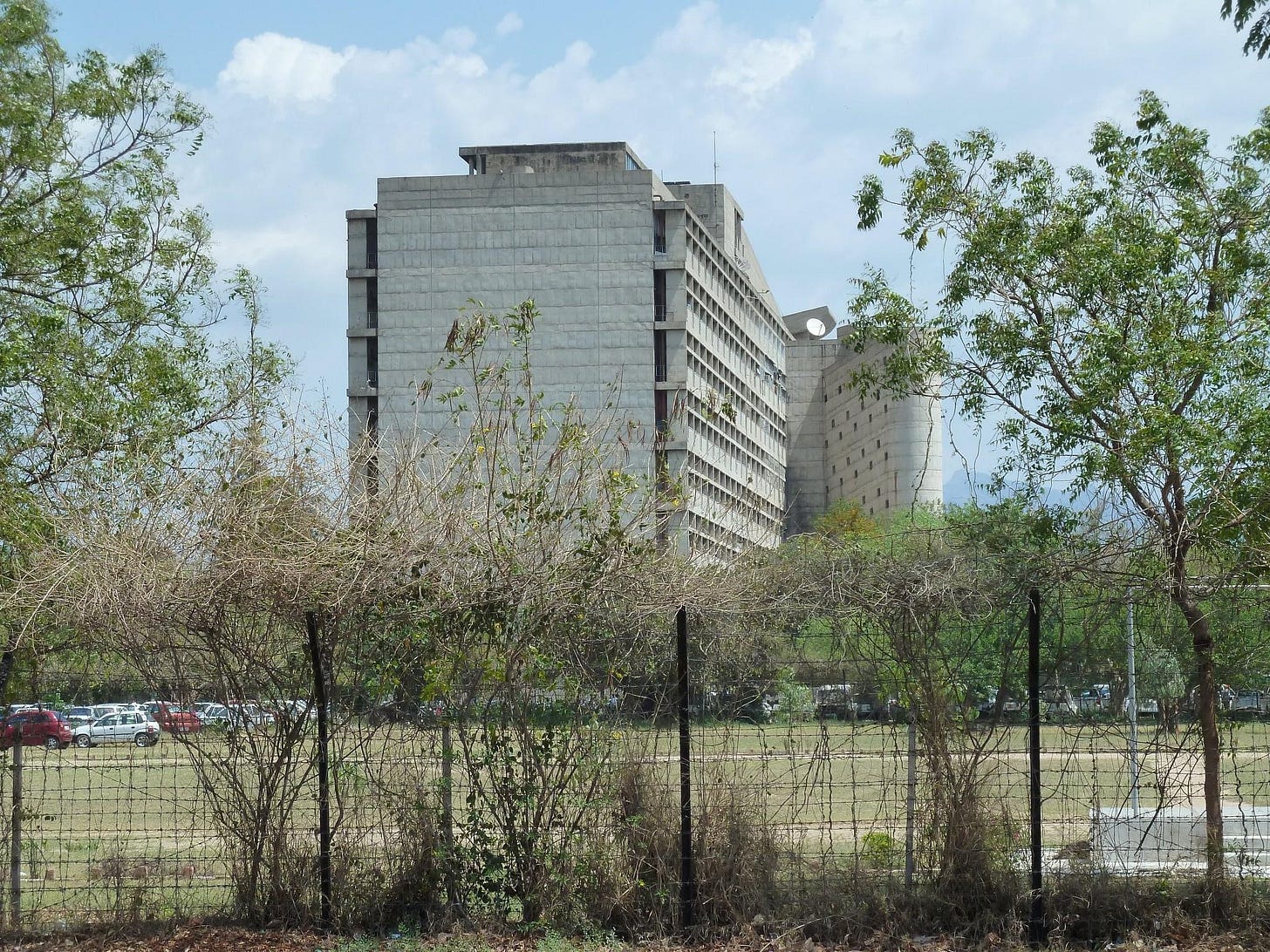Haryana Vidhan Sabha Elections 2024: Smashing Myths and Setting Trends
Haryana Elections Spring a Surprise.
Smashing Myths and Setting Trends
The Bharatiya Janata Party (BJP), defying all expectations, is poised to secure a comfortable majority in the Haryana Vidhan Sabha elections, with the counting of votes commencing today at 8 a.m. Exit polls had predicted a significant advantage for the Congress, suggesting they would secure around 60 of the 90 seats. However, the actual results have been nothing short of astounding. While this article will not delve into a detailed constituency-wise analysis, it aims to highlight ten key myths that have been shattered by this unexpected outcome.
In summary, "the Haryana results, much like AAP's earlier success in Punjab, reflect the consolidation of non-dominant castes," noted Ramesh Negi, a 1984-batch retired IAS officer of the UT cadre from Himachal Pradesh. Negi, who previously served as Chief Secretary of Himachal Pradesh and held key positions in the NCT of Delhi, provided this insightful observation based on his extensive administrative experience.
1. Anti-Incumbency: A Myth in Good Governance
The BJP's victory demonstrates that the idea of an inevitable anti-incumbency wave is outdated if good governance is delivered. In Haryana, despite being in power for two consecutive terms, the BJP's focus on clean, corruption-free governance at the grassroots level has helped them secure this win. By changing the Chief Minister just six months prior to the elections, the party showed its ability to adapt while retaining the core policies that helped maintain public trust. Performance, not promises, became the foundation of this electoral success.
2. Modi Magic Remains Strong
Despite speculation and the Congress propaganda that the BJP was intentionally downplaying Prime Minister Narendra Modi in campaign posters, advertisements, and social media graphics due to apprehension of an impending defeat, the outcome highlights the enduring strength of his leadership. The BJP's reliance on Modi's charisma, both nationally and in a smaller but strategically important state like Haryana, has once again proven effective. The Prime Minister’s persona, much to the chagrin of his detractors, continues to inspire loyalty and galvanise support across a wide range of constituencies.
3. Minority Voices Don’t Always Reflect the Majority
Much of the pre-election discourse indicated that the Jat vote had shifted away from the BJP, driven by dissatisfaction over unmet promises such as the statutory Minimum Support Price (MSP). However, despite making no special efforts to win back this demographic, the BJP still emerged victorious. This suggests that a broader coalition, including the Brahmin and Bania communities, Scheduled Castes, backward classes, and the Punjabi community in Haryana, found their interests aligned with the BJP. It also underscores that vocal, discontented minorities do not always dictate electoral outcomes.
4. EVM Reliability is Beyond Reproach
Once again, India’s Electronic Voting Machines (EVMs) have proven their reliability. In contrast to Western democracies still grappling with paper ballots, the quick and transparent results in Haryana reaffirm the trustworthiness of EVMs. Those criticising the system appear to be poor losers, unwilling to accept defeat. The Election Commission's stringent procedures, including mixing of machines and secure protocols, ensured a smooth and credible election process.
5. Exit Polls: A Misleading Indicator
Practically all exit polls predicted a Congress majority, painting a grim picture for the BJP. However, the actual results have cast doubt on the accuracy and reliability of these predictions. In a world where television networks thrive on the drama of exit polls for ratings and advertisement revenue, this outcome serves as a warning to take such predictions with a hefty dose of scepticism. In Haryana, the real “exit” was of the exit polls themselves.
6. AAP Fails to Make Inroads in Haryana
The Aam Aadmi Party (AAP), despite its success in Delhi and Punjab, has failed to leave a mark in Haryana. The absence of its leader, Arvind Kejriwal, from the campaign due to legal troubles and incarceration may have contributed to this outcome. The AAP did not form an alliance with Congress, and the BJP's victory suggests that AAP's brand of politics is yet to find traction in Haryana, even though Kejriwal hails from the state. AAP has a long road ahead before it can hope to consolidate itself here.

7. The Jat Vote Bank is Diminishing
Contrary to expectations, the Jat vote did not overwhelmingly shift away from the BJP. While some sections expressed dissatisfaction, others, particularly those involved in non-agricultural sectors, extended their support to the party. This mirrors the 2022 Punjab elections, where Balbir Singh Rajewal’s faction, despite the farming community’s “success” in the farmers' agitation, failed to convert that momentum into electoral gains. Sympathy for farmers' causes does not automatically translate into votes for farmer-led parties, as seen in both states.
8. Grassroots Investment Matters More Than Freebies
Haryana's financial prudence, particularly its decision to avoid offering free electricity like neighbouring Punjab, has allowed it to invest in infrastructure and initiatives targeting marginalised communities. This fiscally responsible governance model has clearly resonated with voters, aligning with the BJP's national mantra of "Sabka Saath, Sabka Vikas" (inclusive growth). The state's higher GST receipts compared to Punjab are a testament to this approach, and these growing resources can be channelled into funding social security programmes for excluded sections of society.
9. Vote Share Does Not Always Reflect Seat Share
The close vote share between Congress and the BJP shows that while Congress won its strongholds with wider margins, the BJP's strategy of focusing on marginal constituencies allowed it to secure more seats. This lesson in electoral strategy should prompt parties to focus on competitive constituencies rather than investing resources in their already secure strongholds.
10. Haryana Sets the Trend
As a relatively small state, Haryana's political landscape has often been a bellwether for larger trends in Indian politics. This election, which saw the BJP win despite challenges, sends a strong message to political parties across India. A positive agenda focused on governance and performance can yield results even in the face of vociferous opposition and negative campaigning.
Summing Up
The 2024 Haryana elections have not only delivered a surprising victory for the BJP but have also shattered several long-standing political myths. From the reliability of EVMs to the diminishing influence of exit polls and traditional vote banks, this outcome provides critical lessons for political parties as they prepare for upcoming contests in other states. Haryana has once again proven itself to be a trendsetter, reinforcing its significance in shaping India's broader political narrative. Congratulations are due to Prime Minister Narendra Modi, Home Minister Amit Shah, BJP President J.P. Nadda, and Haryana’s Chief Minister, Nayab Singh Saini, for guiding the party to this remarkable triumph.
If the Congress Party hopes to perform better in Maharashtra, where elections are due in November, it must swiftly learn from its unexpected setback in Haryana. Failure to do so could result in history ruthlessly repeating itself.







I agree with the author on all TEN points but add my observation on 2 more factors. The release of Gurmit Ram Rahim on parole just 3 days before elections was also a factor to garner votes for BJP. The other factor is infighting in the Congress, and AAP spoiling the Congress vote bank.